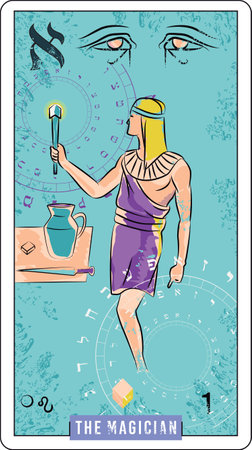Introduction to Astrological Houses in the British Context
Astrological houses form the foundation of every natal chart, segmenting the sky into twelve distinct realms that reflect key areas of life. While the concept of houses is universal, their interpretation can take on unique subtleties when viewed through the lens of British culture and geography. The United Kingdom’s rich historical tapestry, varied climates, and pronounced regional identities all contribute to how astrology is both practised and perceived across England, Scotland, Wales, and Northern Ireland. From the mystical landscapes of Glastonbury to the bustling streets of London, each locale offers a distinctive backdrop that colours astrological readings. In this article, we embark on an exploration of how these houses are understood within the British context—where centuries-old traditions, social nuances, and even the unpredictable weather interplay with celestial symbolism. By appreciating these uniquely British influences, one may glean deeper insight into personal and collective astrological narratives.
Historical British Perspectives on Astrology
Astrology’s journey through British history is a tale woven into the very fabric of its cultural and scientific evolution. From the mystical courts of the medieval period to the rational salons of the Enlightenment, the British approach to astrology has always been influenced by both location and local tradition. The unique geography of the British Isles—its latitude, climate, and even political boundaries—has shaped how astrologers interpret the heavens and apply astrological houses to individual charts.
In medieval England, astrology was often practised by learned scholars and court astrologers who adapted classical Greco-Roman models to suit their local realities. The distinct northern latitude of Britain meant that house cusps and planetary positions appeared differently than in Mediterranean regions, leading British astrologers to develop their own methods for chart calculation and interpretation. Furthermore, local timekeeping systems, such as those based on sundials or later mechanical clocks set to Greenwich Mean Time, influenced how ascendants were determined, thus affecting house placements.
The Renaissance brought renewed interest in astrology among Britain’s intellectual elite, who sought to harmonise ancient wisdom with emerging scientific knowledge. As universities like Oxford and Cambridge incorporated astronomy and astrology into their curricula, students learned to reconcile celestial theory with practical observation from British soil. Over time, this led to subtle but significant variations in how key concepts—such as angular houses or planetary rulerships—were understood across different regions of the UK.
Regional Influences on Astrological Practice
Astrological practice in Britain has never been monolithic; instead, it reflected regional distinctions shaped by historical events and cultural exchanges. The following table provides a brief overview:
Period |
Key Development |
Location Influence |
|---|---|---|
| Medieval (11th-15th c.) | Court astrologers adapt classical techniques | Adjustment for northern latitude; integration of local folklore |
| Renaissance (16th-17th c.) | Academic study at universities | Focus on empirical observation from British sites |
| Georgian/Victorian (18th-19th c.) | Popularisation among middle classes | Use of standardised time zones; expansion via print culture |
| Modern Era (20th c. onwards) | Diversification and revival movements | Merging traditional methods with global influences; digital calculation based on precise coordinates |
Conclusion: The Enduring Impact of Place
The continuous interplay between place and astrological interpretation underscores the importance of geographic context in British astrology. Whether through the lens of history or in contemporary chart readings, understanding these local influences offers a richer appreciation for how Britons have navigated—and continue to navigate—the celestial map above.

3. Geographical Location and House Cusps
Astrological house cusps are not fixed abstractions, but rather dynamic points that shift in response to one’s physical location—a factor especially resonant within the diverse geography of the United Kingdom. The latitude at which an individual is born exerts a subtle yet significant influence upon the orientation and proportion of the astrological houses. For instance, those hailing from northern regions—such as Scotland or Northern England—often find their house cusps unevenly distributed, with certain houses appearing elongated while others contract. This distortion is a direct result of the Earth’s curvature and the unique calculation of local ascendants, making northern charts distinct in their rhythm and resonance.
In contrast, southern locales like Cornwall or Kent tend to yield more evenly spaced houses due to their proximity to the equator relative to British standards. This geographical symmetry can translate into more balanced emphases across life areas represented by each house, subtly shaping interpretations of personal development, career focus, or familial ties.
Urban and rural distinctions also colour chart readings in the UK context. Urban dwellers—in London or Manchester, for example—are often linked with rapid temporal shifts and a multiplicity of influences, which may be reflected in faster-moving angular houses or pronounced midheaven activity. Rural settings—think the Lake District or Welsh valleys—introduce steadier rhythms and more stable house placements, fostering interpretations centred on tradition, continuity, and rootedness.
This interplay between place and chart underscores an ancient axiom: astrology is inherently local. To ignore the landscape is to miss nuances that only British topography can provide. Thus, when interpreting a British natal chart, attention to north versus south, city versus countryside becomes essential—not merely as technical adjustments but as keys unlocking richer astrological meaning.
4. Latitude, Daylight, and the British Experience
The British Isles present an intriguing landscape for astrological interpretation, largely shaped by their unique latitude and climate. Unlike many regions closer to the equator, Britain’s position between roughly 50°N and 60°N introduces marked differences in both daylight hours and solar altitude throughout the year. These environmental factors directly influence the calculation and significance of astrological houses in a natal chart.
Due to Britain’s northern latitude, the length of daylight varies dramatically between midsummer and midwinter. For example, in Inverness, daylight can stretch beyond 18 hours at the summer solstice, while London experiences closer to 16 hours. Conversely, winter days can be strikingly short, with long nights dominating. This variability impacts house cusps—especially when using house systems sensitive to time and place, such as Placidus or Koch—resulting in houses that are sometimes compressed or stretched in a British context compared to locations nearer the equator.
Table: Daylight Variation Across Key British Cities
| City | Latitude | Midsummer Daylight (hrs) | Midwinter Daylight (hrs) |
|---|---|---|---|
| London | 51.5°N | 16.5 | 8 |
| Manchester | 53.5°N | 17 | 7.5 |
| Edinburgh | 55.9°N | 17.5 | 7 |
| Belfast | 54.6°N | 17.25 | 7.25 |
| Penzance | 50.1°N | 16.25 | 8.25 |
The Astrological Implications of Latitude and Light
This interplay of latitude and shifting daylight means that certain houses may appear unusually large or small on a British chart, especially if the birth occurs at extreme times of year or in northernmost locales. For astrologers practising in Britain, this requires a careful approach: acknowledging not only the mathematical shifts but also how these environmental realities might symbolically colour interpretations of home life (4th house), public persona (10th house), or partnerships (7th house).
Cultural Resonance with British Weather and Mood
The famously variable British weather—a dance of overcast skies, soft rain, and fleeting sunshine—has historically informed local attitudes towards fate, fortune, and introspection. Astrological readings within this setting often reflect a nuanced appreciation for subtle changeability and resilience; qualities mirrored in both the national character and in the mutable boundaries between astrological houses affected by Britain’s geographical quirks.
5. Cultural Nuances in Chart Interpretation
Astrological house interpretation in Britain is inextricably linked to the nation’s unique cultural fabric. The reading of each house often subtly echoes British societal values, traditions, and landmark historical events, shaping not only how astrologers interpret charts but also how individuals understand their own destinies. For example, the importance placed on the fourth house—traditionally associated with home and roots—is often viewed through the lens of Britain’s deep reverence for heritage, ancestry, and family lineage. The symbolism of stately homes, ancestral estates, and a storied sense of place all resonate powerfully within this context.
Similarly, the tenth house of career and public standing carries echoes of the British class system and its historic preoccupation with reputation, honour, and social mobility. A chart reading for someone in Britain may thus pay particular attention to nuances such as education (reflecting the weight given to institutions like Oxford and Cambridge), or public service—a nod to longstanding traditions of civic duty and monarchy.
The sixth house, governing work and health, might be interpreted with reference to Britain’s collective commitment to community welfare—exemplified by the NHS—and a cultural inclination towards “getting on with it” despite adversity. The very concept of “keeping a stiff upper lip” can be seen reflected in both personal interpretations and societal expectations surrounding resilience and duty.
Historical milestones have also left indelible marks on British astrological practice. The Industrial Revolution, World Wars, and the evolution from Empire to Commonwealth have all altered national consciousness; these shifts are often mapped onto chart readings by considering generational planets and outer transits as markers for collective experience within personal narratives.
In sum, interpreting astrological houses in a British context requires a sensitivity to local idioms, values, and historical perspectives. This nuanced approach enables astrology to remain relevant and resonant for those seeking guidance that honours both their individual path and their cultural inheritance.
6. Practical Guidance for UK-Based Chart Interpretation
Adapting House Interpretations for the British Context
When interpreting astrological houses for individuals based in the United Kingdom, practitioners must consider both geographical and cultural specificities that influence chart delineation. The UK’s higher latitudes can significantly alter house cusps, especially when utilising quadrant-based systems such as Placidus or Koch. This often results in compressed or expanded houses, particularly near Scotland or Northern Ireland, which demands a nuanced approach to astrological analysis.
Embracing Local Variability
Astrologers should remain mindful of regional distinctions within the UK—be it urban London, rural Cornwall, or the rugged Highlands. These settings shape lived experiences and thus colour the interpretation of the fourth house (home), tenth house (career), and beyond. Clients from different areas may resonate with interpretations tailored to their local environment; for instance, themes of mobility and tradition might be more pronounced in rural charts versus those of metropolitan dwellers.
Technical Considerations for Accuracy
It is advisable to confirm birth data meticulously, including exact time and place, as daylight saving time and historical timezone changes have varied across England, Wales, Scotland, and Northern Ireland. Utilise reliable ephemerides and software calibrated for UK locations to avoid errors in house cusp calculation. For cases where house distortion is extreme—such as births above 55° latitude—consider alternative systems like Whole Sign or Equal House to maintain interpretive clarity.
Cultural Sensitivity in Language and Symbolism
Incorporate British idioms and references into your consultations to foster relatability. Use metaphors drawn from British history, literature, or the landscape—for example, likening Saturn returns to a “rite of passage” reminiscent of classic British coming-of-age tales. Recognise that British clients may exhibit a characteristic reserve; tailor your communication style accordingly, balancing candid insight with respectful understatement.
Continuous Learning and Community Engagement
Stay engaged with the vibrant UK astrological community through local organisations like the Astrological Association or online forums. Attend conferences and workshops to deepen your understanding of how location impacts chart interpretation on these isles. By blending technical precision with cultural attunement, astrologers in Britain can offer clients truly meaningful guidance attuned to both their stars and their soil.

